Farming has been made easier with the inventions of various tools and machinery. Every stage of crop production has designated tools to perform the intended operations efficiently; there are land preparation tools, planting tools, pest control tools, and harvesting tools. The synergy of these tools and human effort makes farming productive and profitable.
Harvesting tools are a set of instruments used to separate the cultivated crop from the mother plant for consumption or other value-addition processes; examples are sickle, knife, and shears, these are tools used for different harvesting crops at maturity. Harvesting tools have a direct impact on the quality and storage lifespan of the crops; if not handled properly, these tools can cause mechanical injury to the harvested crop through which the crop quality is reduced and chances of rapid spoilage are increased. As you read through, you will learn about the different types of harvesting tools, their uses, and their maintenance to increase the efficiency of these tools.
Types of Harvesting Tools
There are three main types of harvesting tools: hand tools, mechanical tools, and electrical tools. The classification is based on their size, power source, and, handling technique.
Hand Tools
Hand tools are used in conjunction with your hands to harvest crops; they are also called simple harvesting tools. Hand tools are the most common type of harvesting tool. They’re usually simple to use and require little to no training to operate. Hand tools can be used for a variety of purposes, including cutting and pruning plants. They include shovels, rakes, hoes, pitchforks, and garden forks.
Mechanical Tools
Mechanical harvesting tools are designed to help users harvest crops without having to do all of the work themselves. Mechanical harvesting tools usually have some sort of engine or motor that helps them cut through crops faster than hand tools can manage. However, these types of harvesters tend to be more expensive than hand tools and they require higher maintenance over time. Examples of Mechanical harvesting tools are tractors and combine harvesters.
Electrical Tools
Electrical harvesting tools combine both mechanical and electrical components into one machine for the purpose of harvesting crops from the farm. These machines use electricity to power their engines so that they can harvest crops faster than other types of machines can manage on their own. An example is the rechargeable garden shears. These tools are also quite expensive and commonly used in large-scale farms.
Tools Used For Harvesting Crops
There are several tools used for harvesting crops, but we cannot select all these tools, we have selected the common harvesting tools that must be present in any garden. The tools are used to cut the crops, collect them, and bring them to their homes where they can be stored.
Sickle
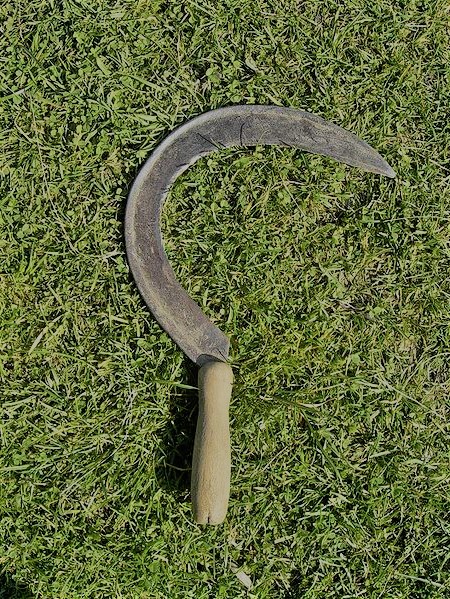
A sickle is a hand-harvesting tool primarily used for harvesting crops like cereal grains, palm tree produce, pasture crops, and fodders. It has a sharp blade, that is either serrated or smooth, and a handle. The blade is used to harvest the grasses, grains, and other succulent parts of the crop plant. The blades differ in length and can be sharpened to cut more easily, while the handles are used for more precise cutting.
Aside from harvesting crops and cutting succulent forage for feeding livestock, sickles are used in other agricultural operations, including shaping soil, controlling weeds, and uprooting root crops. The usage of sickles for harvesting crops dates back to the pre-neolithic era and has evolved through the years to various versions. In modern times, a sickle is usually made of steel or iron.
Scythe
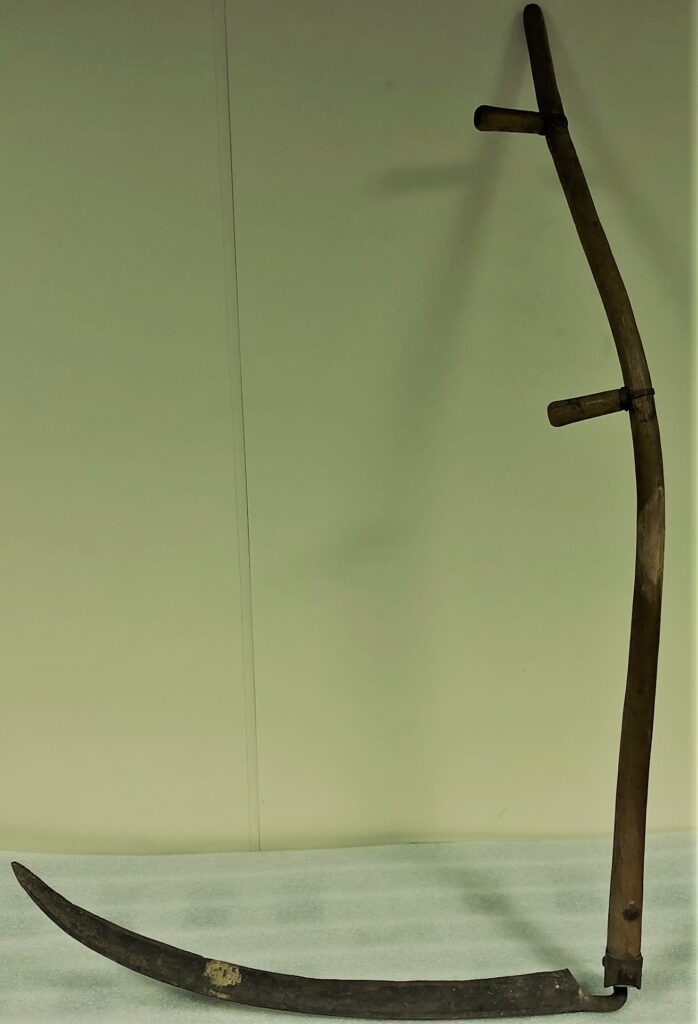
A scythe looks similar to a sickle but it has an extra blade that can be used to harvest grain from stalks after cutting them off with the first blade. It is also used for cutting grasses in lawns or fields where lawnmowers cannot reach easily due to their height from ground level or the density of grasses in patches. A scythe is also a hand-harvesting tool made from metals. It also has a blade and a longer handle than a sickle.
Flail
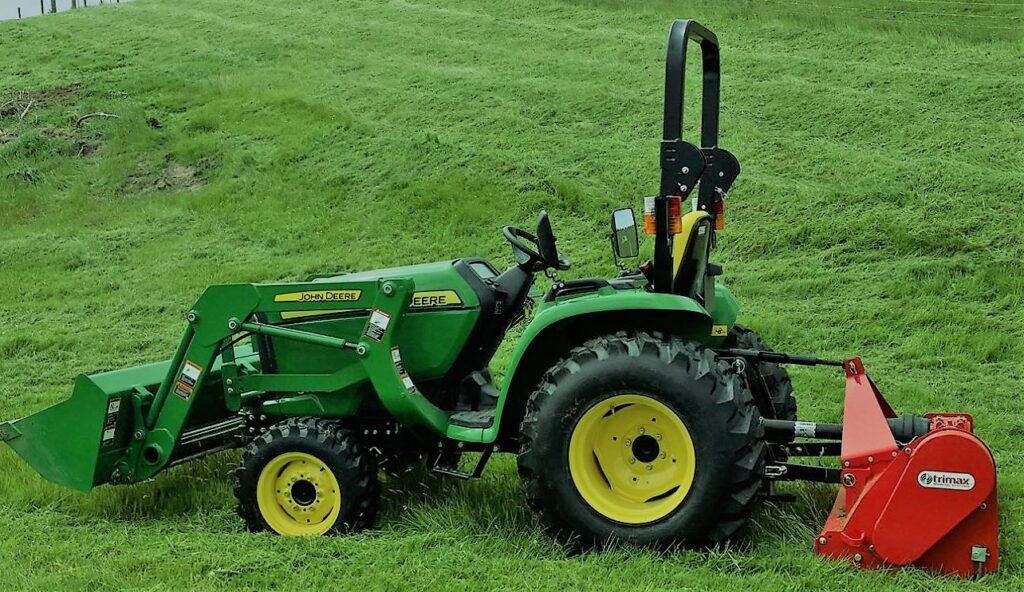
Also known as a flail mower, flail is a mechanical equipment used for harvesting root crops like potatoes and cassava roots; it is also used to harvest grasses and forage crops for feeding livestock. Flail consists of two shafts connected by a chain that is attached to both ends of the shafts. The flail mower harvests crops by swinging both end up into the air at one time then letting them fall back down onto the ground again so that they harvest any crop within the area.
Knife
A knife may not seem like much of a tool, but it is actually very useful and important in harvesting crops. Knife is used to harvest vegetable crops and ornamental plants in the garden. A knife can also be used in conjunction with other harvesting tools to harvest cereal grains; for example, if you’re cutting down wheat with your sickle/scythe and need to trim off some of the remaining pieces close to the ground before they get trampled on by other workers, then you can use a small knife.
Reaping Hook
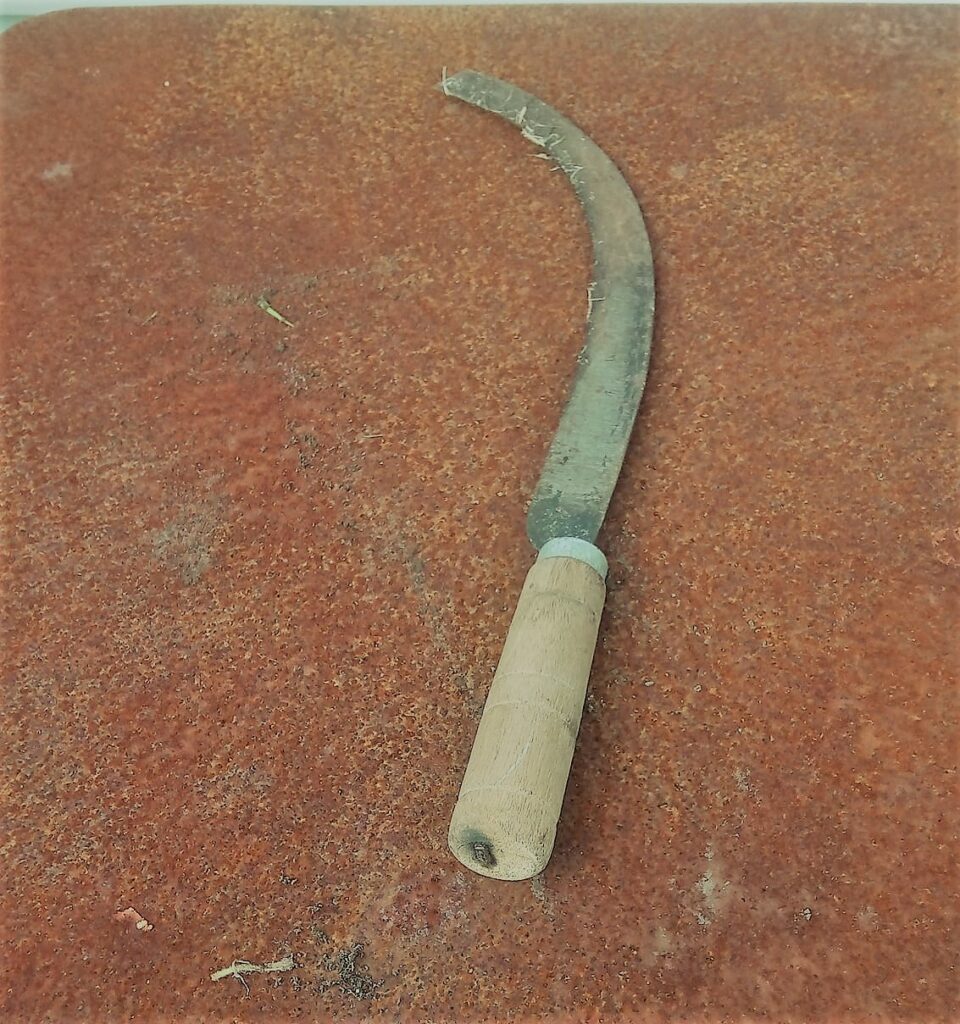
Reaping hooks also known as “hooks” or “crooks” is a harvesting tool with sharp blades on both ends of their handles. They are simple to hand tools used for harvesting grains like corn, millet, and other cereals from the farm. Reaping hooks were first invented in ancient Greece by farmers who needed some way to cut down grain stalks from their fields.
Tapioca harvester
A tapioca harvester is a machine used to harvest cassava. It is composed of a mainframe with a three-point hitch system, a shank with depth adjustment, and a digging blade with pegs. The mainframe and shank are made of mild steel, while the digging blade is made of a trapezoidal-shaped plate with a depth adjustment. The front end of the blade features five pegs, which reduces the draft requirement.
Garden shears
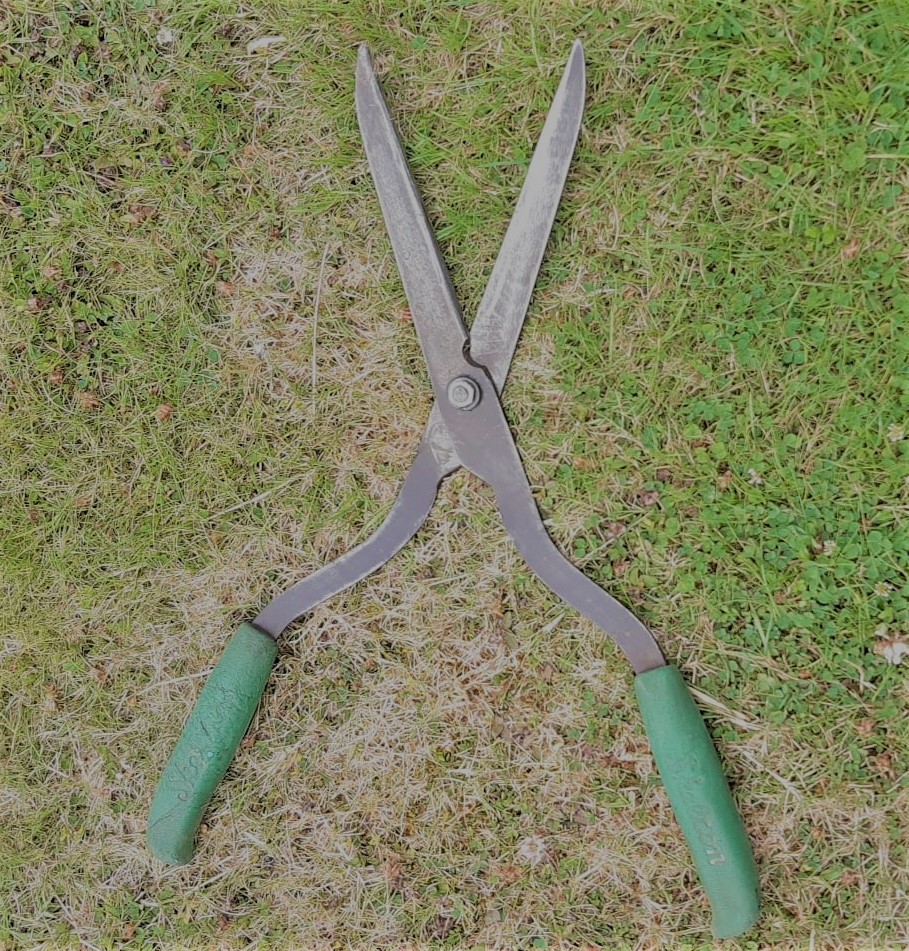
A set of garden shears is a common harvesting tool used in the garden. The garden shear has a long sharp double blade and a comfortable handle to aid harvesting operation. The blades are made from hardened steel or carbon steel for maximum strength and durability. The main use of garden shears is to harvest fruits and vegetables; they can also be used to cut branches and bushes. Garden shears are easy to use and can produce excellent results.
Aside from harvesting garden crops, garden shears can also be used for pruning, training, and shaping ornamental crops for a beautiful appearance. Pruning is the process of removing overgrown or diseased plant parts; training and shaping help control the direction of plant growth. Shaping is also useful for preparing plants for transplant.
Nut wizard
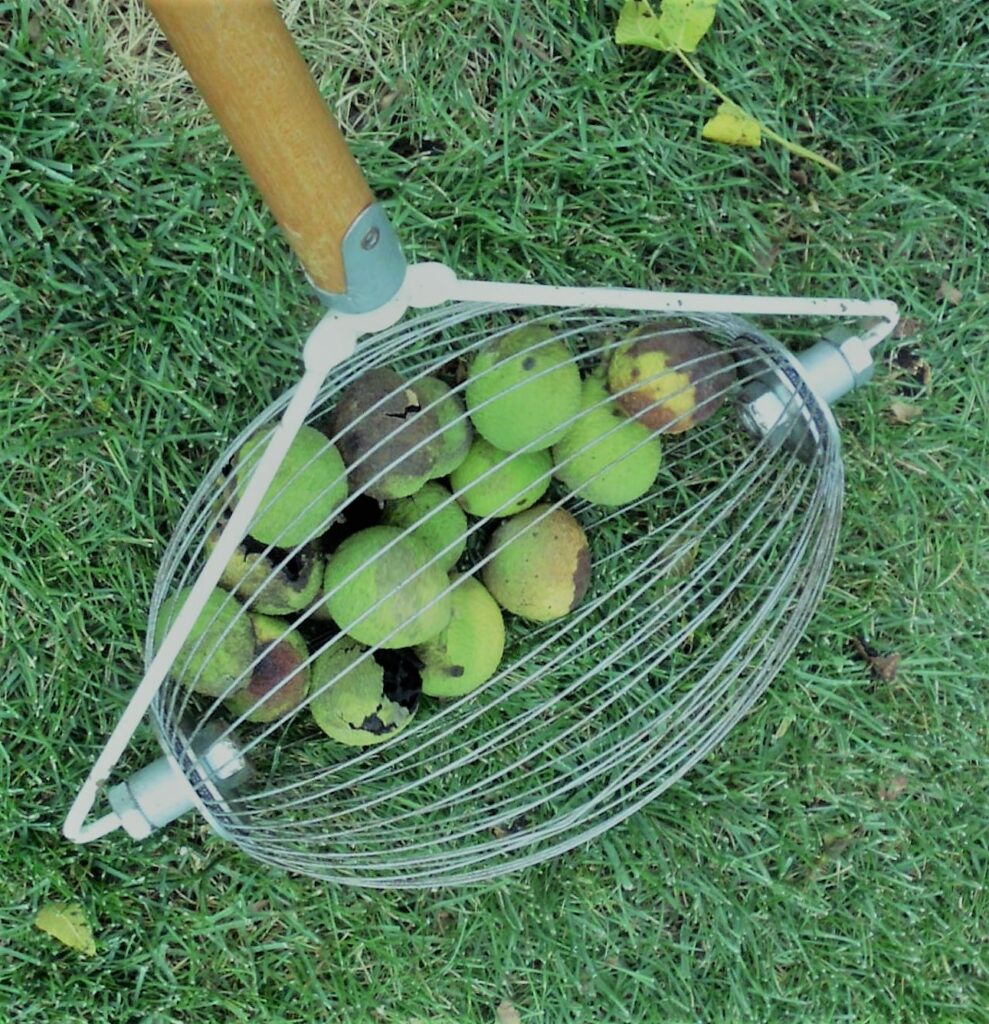
A nut wizard is a tool used for harvesting nuts and other crops. This harvesting tool rolls over a nut or fruit and gathers it. When you are done, you can empty the nut or fruit with the optional wire dumper. The tool has a four-foot wooden handle and can be used to pick up pecans, hickory nuts, and large acorns. The nut wizard is available in two sizes: the small version can handle small nuts while the large one can handle large nuts and fruits. The nut wizard is also easy to disassemble, and it comes with a small fixture for attachment to a bucket.
Maintenance of Harvesting Tools
Harvesting tools are prone to wear and tear due to frequent usage. The majority of the tool parts are made of metals which are prone to rust over time. Regular maintenance of the harvesting tools makes the tool more durable and the service life is greatly extended. Here are some maintenance tips that can be used to preserve the quality of these harvesting tools:
- Clean each tool after harvesting is done; remove all dirt, dust, and grime from the blade and make it look new again.
- For harvesting tools with blades, sharpen the blades regularly by using a sharpening stone or file. This will keep the blades more efficient in cutting through crops without splintering apart due to dullness.
- Store each harvesting tool safely in a storage box when not in use and keep it out of reach of children to avoid cuts.
- Perhaps you find any part of the harvesting tools getting rust, you can remove the rust with steel wool or a wire brush and apply oil or grease to prevent further rusting.
- Tighten up any loose rivets of the harvesting tools using pliers and an adjustable wrench to ensure the component parts are working correctly.
Harvesting crops becomes easy when the right tools are used. Procurement of required harvesting tools in any farm enterprise is a huge investment and the reward for this investment is having harvested produce that is free from bruises and any mechanical damage that may reduce the quality of the crops and in turn reduce their market value. Happy Gardening!